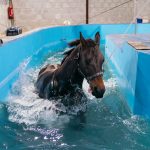In the evolving field of medical rehabilitation, scholars and practitioners are continually seeking innovative approaches to enhance the recovery process for stroke patients. New technologies and methodologies are emerging, offering promising avenues for improved outcomes. Among these, virtual reality (VR) technology is showcasing potential in facilitating the improvement of motor skills in stroke rehabilitation. Leveraging the vast resources available on platforms like Google Scholar, PubMed, and Crossref, this article delves into the latest research and studies on this subject to provide a comprehensive understanding.
The Role of Virtual Reality in Stroke Rehabilitation
As the name suggests, virtual reality creates a simulated environment that can mimic real-life scenarios. This technology has been steadily gaining traction in the field of stroke rehabilitation. Here, we will explore the role of VR in recovery and rehabilitation processes, focusing primarily on motor skills improvement.
Additional reading : What Are the Potential Health Benefits and Risks of a Pescatarian Diet on Heart Health?
A stroke often leads to reduced motor function among patients, which can impact their quality of life significantly. Hence, rehabilitation efforts typically include interventions aimed at restoring motor skills, such as balance and limb function. Conventional methods often involve physical therapy and exercises. However, VR adds an exciting dimension to these traditional approaches.
Motor Skills Improvement through VR Therapy
Applying VR in stroke rehabilitation takes advantage of the technology’s ability to create interactive, engaging environments for patients to safely practice and regain their motor skills. This section discusses how VR therapy can facilitate recovery and improve motor functions among stroke patients.
Also read : Can Hydrotherapy Exercises Provide Benefits for Individuals with Rheumatoid Arthritis?
Studies have shown that VR therapy can help stimulate brain regions that control motor functions, thus enabling better function recovery. This therapy is not just about playing games or navigating through digital landscapes. It is an immersive experience that engages multiple senses, which in turn can stimulate motor function recovery.
For instance, a patient might use a VR headset and handheld devices to simulate tasks like cooking, grocery shopping, or playing a sport. These exercises can help retrain the brain to regain lost motor functions and balance. Moreover, VR therapy can be tailored to each patient’s unique needs and progress, providing a personalized approach to stroke rehabilitation.
Comparing Virtual Reality Therapy to Conventional Rehabilitation Methods
Now that we’ve established how VR therapy works, let’s compare it to conventional rehabilitation methods. In this section, we will look at numerous studies and research papers accessible through platforms like Google Scholar and PubMed to examine how VR therapy stacks up against traditional rehabilitation approaches.
Researchers have found that patients who undergo VR therapy often show similar or even better improvements in motor function compared to those who receive conventional therapy alone. This is likely due to the immersive, engaging nature of VR, which can motivate patients to participate more actively in their rehabilitation.
Also, VR can simulate a variety of activities that may not be possible in a standard physical therapy setting. This can provide stroke patients with a broader range of experiences and exercises, which can potentially lead to better outcomes.
Case Studies and Experiments with VR in Stroke Rehabilitation
To further illustrate the effectiveness of VR in stroke rehabilitation, let’s delve into some specific case studies and experiments. Through these real-life examples, we can see the direct impact of VR therapy on stroke patients’ recovery and motor skills improvement.
One study, for instance, divided stroke patients into two groups. One group received conventional therapy while the other participated in VR-based exercises. The results showed that the VR group experienced a more significant improvement in their motor skills and balance than the conventional group.
Another experiment published on PubMed involved a similar setup, with one notable difference: the VR group participated in a form of competitive gaming. The results showed that the patients in the VR group were more motivated to participate in the therapy, which led to better motor function recovery.
Future Prospects of VR in Stroke Rehabilitation
Given its promising results, the use of VR in stroke rehabilitation is set to expand in the coming years. But what does the future hold for this innovative approach? This section delves into the possibilities and potential advancements in the application of VR in stroke rehabilitation.
One potential development is the integration of artificial intelligence (AI) with VR, which could allow for even more personalized and adaptive therapy programs. Furthermore, with technological advancements, the cost of VR equipment is expected to decrease, making VR therapy more accessible to a broader range of patients.
Moreover, as more research and studies emerge on this topic, medical professionals will likely gain a deeper understanding of the best practices for implementing VR in stroke rehabilitation. This could lead to more effective treatment plans and enhanced recovery outcomes for stroke patients.
In summary, virtual reality presents a promising tool in improving motor skills in stroke rehabilitation. As technology and our understanding of VR therapy evolves, we can expect this innovative approach to become more prevalent in the years to come.
Possible Challenges and Limitations of VR in Stroke Rehabilitation
One must carefully consider the challenges and limitations that come with implementing VR in stroke rehabilitation. Despite the promising benefits, a comprehensive adoption of VR therapy does come with certain drawbacks that warrant discussion.
First, although the costs of VR equipment have significantly decreased over the years, it still remains an expensive option compared to conventional therapy methods. This could limit the accessibility of VR therapy to stroke patients, particularly those in resource-constrained settings or with financial difficulties.
Second, the use of VR therapy requires the patient to have a certain level of cognitive function, which may not always be possible for stroke survivors. For instance, the patient must be able to understand and respond to the simulated environments to effectively participate in VR exercises. Hence, patients with severe cognitive impairments might not benefit from VR therapy as much as others.
Third, like any technology, VR comes with a learning curve. Older patients, or those who are not accustomed to technology, may find it challenging to use VR equipment and navigate through VR environments. This could potentially discourage these patients from participating in VR therapy.
Despite these challenges, it’s important to remember that innovation often comes with growing pains. As technology advances and becomes more user-friendly, these barriers are likely to diminish.
Conclusion: The Potential of VR in Stroke Rehabilitation
To conclude, it is evident from the wealth of research available on Google Scholar, PubMed, and Crossref that virtual reality holds significant potential in stroke rehabilitation, particularly in improving motor skills. The immersive nature of VR therapy motivates patients to actively participate in their rehabilitation and provides a broad range of exercises that can be personalized to each patient’s needs and progress.
However, like any innovative approach, VR therapy comes with its own set of challenges and limitations. The cost of VR equipment, patients’ cognitive function, and the technology’s learning curve might hinder its widespread adoption. Nevertheless, as we continue to advance in technology and our understanding of VR therapy, these barriers are likely to diminish.
The future looks promising for VR in stroke rehabilitation. With potential advancements like the integration of artificial intelligence and increased affordability of VR equipment, we can expect to see this innovative approach become more prevalent. As more studies and research emerge, we will gain a deeper understanding of the best practices for implementing VR in stroke rehabilitation, which will ultimately lead to more effective treatment plans and enhanced recovery outcomes for stroke patients.
In the years to come, as technology continues to evolve, we can hope to see virtual reality playing an even larger role in stroke rehabilitation, transforming the way we approach patient care and recovery.











